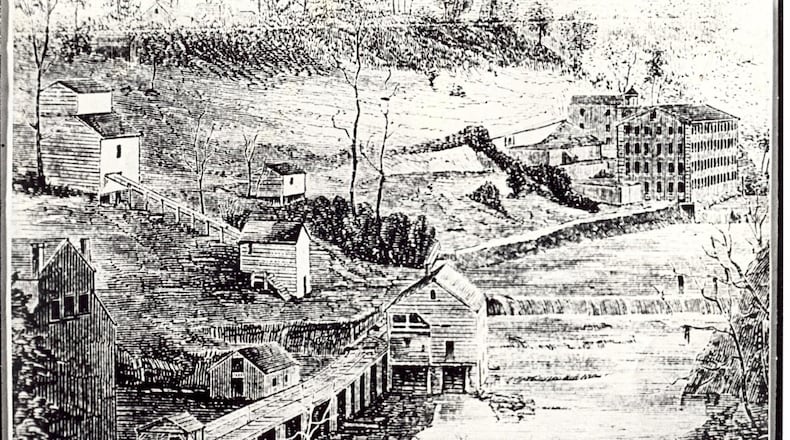Many folks living in metro Atlanta think of General William T. Sherman and the city’s 1864 burning when the Civil War is mentioned.
But months before that, Sherman ordered his men to destroy mills in Roswell and to arrest about 400 women who were working in them.
This year marks the 154th anniversary of Sherman invading Roswell and the deportation of the Roswell Mill women. Most of the women who were sent away by Union forces never returned to Roswell, according to GeorgiaEncylopedia.org.
READ | Who are the 'Lost Mill Workers of Roswell'?
READ | War in our backyards: How Atlanta became a decisive turning point in Civil War
READ | The Atlanta Journal-Constitution celebrates 150 years
READ | This Life with Gracie: Does an apology for slavery matter to you?
In 1998, a Sons of the Confederate Veterans group started a project to honor the deported mill workers. In 2000, the project was finished and Roswell unveiled a monument in Sloan Street Park. The monument is a 10-foot tall Corinthian column that is shattered at the top to symbolize the lives torn apart by the Civil War.
According to GeorgiaEncylopedia.org, Union forces first descended upon Roswell on July 5, 1864. As Union troops had started their approach towards Atlanta, many who lived in Roswell fled and the remaining residents were mostly women who worked in cotton and wool mills to produce clothes and supplies for Confederate troops.
Union troops and Kenner Garrard, a brigadier general, were seeking a way to cross the Chattahoochee River and began a 12-day occupation of the undefended Roswell on July 5 by destroying the mills. The next day, according to GeorgiaEncylopedia.org, Garrard reported the destruction to General Sherman, who approved of it.
The Machine Shop is the only mill building that survived Garrard’s orders.
READ | Roswell halts transcription of meetings, livestream begins in fall
READ | New music venue and bar in Alpharetta hopes to open by September
READ | Sandy Springs is 5th best for young families to buy a home, study says
Sherman then ordered Garrard that the mill workers, who were mostly women, be arrested, charged with treason and marched to Marietta. The women, their children and a few men were sent to Marietta and kept at the Georgia Military Institute, according to GeorgiaEncylopedia.org.
Several days later, the prisoners were sent by train to Kentucky and Indiana.
Less than a year later, the Civil War would end after Robert E. Lee surrendered in Virginia and after the Battle of Palmito Ranch in Texas.
Visitors can visit the site and Roswell’s Old Mill Park any day from 8 a.m. to 6 p.m. It’s just off of GA-400 and offers free parking and public restrooms.
For more information, visit Explore Georgia and the Georgia Encyclopedia.
Like North Fulton County News Now on Facebook | Follow on Twitter
RELATED...
About the Author
Keep Reading
The Latest
Featured


